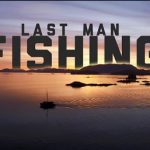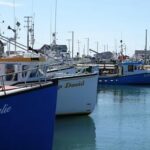Tag Archives: American eel
Catch of the Night
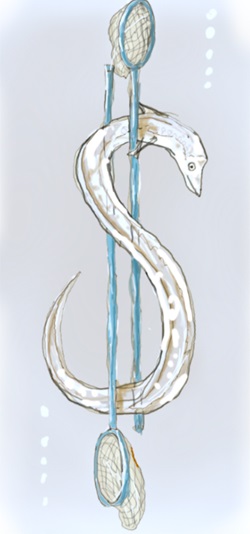 The American eel’s lifestyle is as elusive as it gets. No one has seen one mate in the Sargasso Sea, the eel’s birthplace. However, we know that after hatching, eels begin their journey to land by following the Antilles Current and Gulf Stream toward the mouths of North American rivers. Elvers (juvenile specimens also known as glass eels) then venture inland, mature, and later return to the ocean to mate, with the entire process ranging from a few months to a few years in duration. The unfortunate truth is that eel populations worldwide are rapidly declining. They have faced overfishing since the 1970s, resulting in poaching regulations in most of the world. Today, just two US states award eel fishing licenses: South Carolina and Maine. Because South Carolina only allows traps for fully grown eels, Maine has become the heart of the elver issue. more, >>click to read<< By Phil Avilov10:31
The American eel’s lifestyle is as elusive as it gets. No one has seen one mate in the Sargasso Sea, the eel’s birthplace. However, we know that after hatching, eels begin their journey to land by following the Antilles Current and Gulf Stream toward the mouths of North American rivers. Elvers (juvenile specimens also known as glass eels) then venture inland, mature, and later return to the ocean to mate, with the entire process ranging from a few months to a few years in duration. The unfortunate truth is that eel populations worldwide are rapidly declining. They have faced overfishing since the 1970s, resulting in poaching regulations in most of the world. Today, just two US states award eel fishing licenses: South Carolina and Maine. Because South Carolina only allows traps for fully grown eels, Maine has become the heart of the elver issue. more, >>click to read<< By Phil Avilov10:31

The New Generation of Hydropower Dams Let Fish Swim Straight Through
The journey between the States and the Sargasso Sea is complicated not only by the trawling nets of fisherman, but the steep concrete walls and sharp steel turbines of hydroelectric power plants, over 900 of which are located within the native range of the American eel. Such dams provide huge amounts of emissions-free energy to the US, making them an essential tool in fighting climate change. Allowing fish to safely pass directly through turbines is a new frontier in making dams fish friendly. Thus far, Natel has completed three hydro installations: in Oregon, Maine, and Austria. >click to read< 09:24
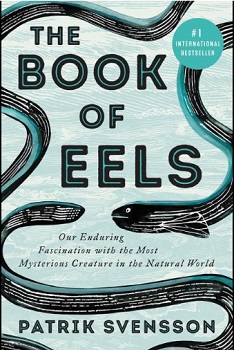
How much like the eel are we?
“The Book of Eels” is as much about origins and meaning as it is about eels. Once people comprehend the eel’s astonishing life journey, it’s difficult not to identify, seek metaphors of association and anthropomorphize. The eels’ mysteries are ours as well. After millennia of study and conjecture, we now know that American and European eels get their start in the Sargasso Sea northeast of Cuba. We also know that the nascent eels – tiny, transparent, flat larvae that are shaped like willow leaves – float off on currents either to America or Europe. Upon arriving at a predestined coast, their transformed little bodies smoothly transition from salt to freshwater. They choose a brook or stream and eventually settle down at some spot – random or not is unknown >click to read< 15:22

Eel of Fortune
Against a backdrop of competing cultural and commercial interests, Canadian regulators will soon spin the wheel on the future of the little-understood American eel. Lighting the hissing naphtha lamp mounted at the front of his metal canoe, Kerry Prosper prepares for a midsummer eel hunt on Nova Scotia’s Pomquet Harbour. It’s just past sunset, and the conditions are perfect, with warm air gently rolling off the bay and smoothing the water’s surface to glass. Prosper timed tonight’s trip with the new moon; eels get skittish when there’s too much light. Even lightning scares them into hiding. >click here to read< 10:54 

American eel turns up in southwestern Minnesota lake
An American eel — far, far away from its natural home in the North Atlantic Ocean — was found in a southwestern Minnesota lake late last month. Minnesota Department of Natural Resources fisheries workers conducting a lake survey on Cottonwood Lake about 16 miles southwest of Granite Falls captured a female, 37.4-inch American eel in their trap net late last month. American eel spawn in the Sargasso Sea in the north Atlantic Ocean. However, the American eel spends the majority of its life in freshwater habitat before returning to the Sargasso Sea to complete the life cycle. Larvae of this fish ride the currents randomly for hundreds or even thousands of miles before finding freshwater habitat. That makes this particular eel’s journey all the more impressive, having likely ridden ocean currents into the Gulf of Mexico and swimming upstream thousands of miles via the Mississippi River and the nearby Minnesota River. click here to read the story 11:06

Inside the Multi-million-Dollar World of Eel Trafficking
The alleged kingpin of one of the biggest domestic wildlife smuggling operations ever to hit the East Coast is exactly where you’d expect to find him on a rainy evening in early May: firmly planted in a swivel chair at a big green metal desk inside his renovated Quonset hut on Foster Street, in Ellsworth, Maine. At this post Bill Sheldon waits day and night for fishermen to come and fill his bowl with writhing masses of baby eels. The 72-year-old fisherman wears glasses, a blue flannel shirt, jeans, duck boots, and a brown L.L. Bean baseball cap. His cell phone goes quack, quack, quack when it rings. The sign above his head reads, “Buying Glass Eels Here,” with the day’s market price: $1,250 per pound. (so much more about the fishery in this article than “trafficking”) click here to read the story 09:26
The unusual, mysterious American eel
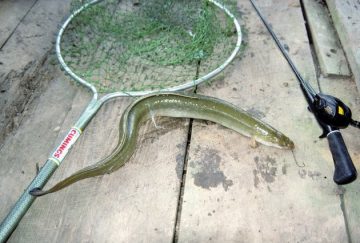 I recently watched a man fishing in the Arkansas River at Little Rock who caught an American eel. When he set the hook, the angler was pleased with the reaction. The fish surged away, stripping line against the drag. The man grunted and cranked, smiling all the while. When the 2 1/2-foot fish was finally beached, the man’s demeanor abruptly changed. I doubt he could have been more horror-stricken had he landed a 20-foot anaconda. He dropped his rod, ran to his pickup, extracted a .357 revolver and proceeded to plug the “beast.” When the gun was empty, he smiled again, turned to me and said matter of factly, “I hate @#$+& eels.” For 23 centuries, man speculated on the origin of the eel. Aristotle was convinced that eels rose spontaneously from mud. Roman scholar Pliny the Elder believed young eels came from bits of skin adults rubbed off on rocks. Scandinavians postulated that another fish, the Aalmutter, was the “eel mother,” while Italian fishermen espoused the idea that eels copulated with water snakes. In early America, it was generally assumed that eels arose spontaneously from horse hairs that fell in the water. Read the rest here 10:02
I recently watched a man fishing in the Arkansas River at Little Rock who caught an American eel. When he set the hook, the angler was pleased with the reaction. The fish surged away, stripping line against the drag. The man grunted and cranked, smiling all the while. When the 2 1/2-foot fish was finally beached, the man’s demeanor abruptly changed. I doubt he could have been more horror-stricken had he landed a 20-foot anaconda. He dropped his rod, ran to his pickup, extracted a .357 revolver and proceeded to plug the “beast.” When the gun was empty, he smiled again, turned to me and said matter of factly, “I hate @#$+& eels.” For 23 centuries, man speculated on the origin of the eel. Aristotle was convinced that eels rose spontaneously from mud. Roman scholar Pliny the Elder believed young eels came from bits of skin adults rubbed off on rocks. Scandinavians postulated that another fish, the Aalmutter, was the “eel mother,” while Italian fishermen espoused the idea that eels copulated with water snakes. In early America, it was generally assumed that eels arose spontaneously from horse hairs that fell in the water. Read the rest here 10:02
TEXAN FILES LAWSUIT AGAINST TEXAS PARKS AND WILDLIFE
 Local President of Texas American Eel Association Jason Fregia was denied the right to file a petition with Texas Parks and Wildlife to add the American Eel to the Texas commercial fishing list. Fregia’s intent was to introduce (TAEA) research to Texas Parks and wildlife proving the American Eel does exist in Texas waterways and Texas Parks and Wildlife is jeopardizing over $467.1 billion dollars in industries in Texas A possible lost in the Texas GDP of 35.7% of the Texas economy could be affected if the American eel was ever listed as endangered or threatened in the United States, according to the Texas comptroller Texas America eels could be generating a huge industry for the economy of Texas Read the complaint here 17:14
Local President of Texas American Eel Association Jason Fregia was denied the right to file a petition with Texas Parks and Wildlife to add the American Eel to the Texas commercial fishing list. Fregia’s intent was to introduce (TAEA) research to Texas Parks and wildlife proving the American Eel does exist in Texas waterways and Texas Parks and Wildlife is jeopardizing over $467.1 billion dollars in industries in Texas A possible lost in the Texas GDP of 35.7% of the Texas economy could be affected if the American eel was ever listed as endangered or threatened in the United States, according to the Texas comptroller Texas America eels could be generating a huge industry for the economy of Texas Read the complaint here 17:14
In the COSEWIC Crosshairs: West Prince eel fisherman fearful for eel fishery
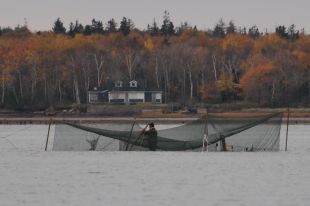 A West Prince eel fisherman worries far-reaching restrictions might be placed on the American Eel fishery here without recognizing the many steps Prince Edward Island fishermen have undertaken to prevent over-fishing. Tignish resident Allan McInnis attended a Department of Fisheries and Oceans consultation meeting in Charlottetown in late January during which DFO explained the Species At Risk Act (SARA).The Committee on the Status of Endangered Wildlife in Canada (COSEWIC) identified the American ell as a species of special concern in 2006. COSEWIC subsequently reassessed the American eel, the species fished throughout the Atlantic as “threatened” in 2012. Read the rest here 13:31
A West Prince eel fisherman worries far-reaching restrictions might be placed on the American Eel fishery here without recognizing the many steps Prince Edward Island fishermen have undertaken to prevent over-fishing. Tignish resident Allan McInnis attended a Department of Fisheries and Oceans consultation meeting in Charlottetown in late January during which DFO explained the Species At Risk Act (SARA).The Committee on the Status of Endangered Wildlife in Canada (COSEWIC) identified the American ell as a species of special concern in 2006. COSEWIC subsequently reassessed the American eel, the species fished throughout the Atlantic as “threatened” in 2012. Read the rest here 13:31
The Cover Up Of The Texas American Eel – Part Three
 While helping Texas Parks and Wildlife (TP&WD) with the Southern Flounder brood stock collection for restocking of Sabine Lake for 8 years, I have been researching the Texas American Eels. I had many questions in regards with the species and its regulations pertaining to catching. Thus to be safe, I got permission from TP&WD to do research on the American Eel in Texas. In addition, I would ask about the Texas American Eel research every few years to cover myself in case of any changes in Texas Parks and Wild Code. by Jason Fregia Part 3 Read the article here The Cover Up Of The Texas American Eel – Part Two Click here Part One Click here 17:44
While helping Texas Parks and Wildlife (TP&WD) with the Southern Flounder brood stock collection for restocking of Sabine Lake for 8 years, I have been researching the Texas American Eels. I had many questions in regards with the species and its regulations pertaining to catching. Thus to be safe, I got permission from TP&WD to do research on the American Eel in Texas. In addition, I would ask about the Texas American Eel research every few years to cover myself in case of any changes in Texas Parks and Wild Code. by Jason Fregia Part 3 Read the article here The Cover Up Of The Texas American Eel – Part Two Click here Part One Click here 17:44
The Cover Up Of The Texas American Eel – Part Two by Jason Fregia
 Early this year I started a petition to have the Texas American Eel put on the Commercial Fishing list here in Texas after Texas and Parks and Wildlife would not allow me to Petition the for a rule change.allow me to Petition the Texas Parks and Wildlife Commission for a rule change. They actually denied me before even filing the Petition with the commission when I was asking how, so I could file. The Petition Clause protects the Right to Petition all branches and agencies of Government for action. They consider my asking how as my actual petition which was clearly a violation of my civil rights, The First Amendment to the United States Constitution states. Read the rest here 21:46
Early this year I started a petition to have the Texas American Eel put on the Commercial Fishing list here in Texas after Texas and Parks and Wildlife would not allow me to Petition the for a rule change.allow me to Petition the Texas Parks and Wildlife Commission for a rule change. They actually denied me before even filing the Petition with the commission when I was asking how, so I could file. The Petition Clause protects the Right to Petition all branches and agencies of Government for action. They consider my asking how as my actual petition which was clearly a violation of my civil rights, The First Amendment to the United States Constitution states. Read the rest here 21:46
The Cover Up Of The Texas American Eel – by Jason Fregia
 Recently there was a petition filed with USFW to list the American eel as a Threatened species by CESAR “Council for Endangered Species Act Reliability”, The American eel was not listed under the threatened Species Act by U.S. Fish and Wildlife Service. According to the wildlife service the American eel’s population is still stable. Without knowing of the huge population of American eels that exist in Texas. Texas is not allowing the harvest of the eels due to the result of a cover up to protect Texas Parks and Wildlife from legal repercussions due to falsifying Federal Documents. Read the rest here 19:27
Recently there was a petition filed with USFW to list the American eel as a Threatened species by CESAR “Council for Endangered Species Act Reliability”, The American eel was not listed under the threatened Species Act by U.S. Fish and Wildlife Service. According to the wildlife service the American eel’s population is still stable. Without knowing of the huge population of American eels that exist in Texas. Texas is not allowing the harvest of the eels due to the result of a cover up to protect Texas Parks and Wildlife from legal repercussions due to falsifying Federal Documents. Read the rest here 19:27
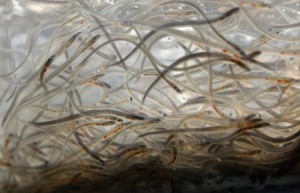
American eel won’t be listed under Endangered Species Act
American eels will not be listed under the Endangered Species Act, the U.S. Fish and Wildlife Service said Wednesday, a victory for fishermen of the increasingly valuable species. The wildlife service rejected a petition from the California-based Center for Environmental Science, Accuracy & Reliability to list the eels — which are prized in Asian cuisine — as threatened. The petitioners argued that the eels have lost more than 80 per cent of their habitat and the security of the stock is jeopardized by fishing pressure from commercial fishing, blah blah blah! Read the rest here 13:24
AESA Urges U.S. Government to Reject ESA Listing for American Eel
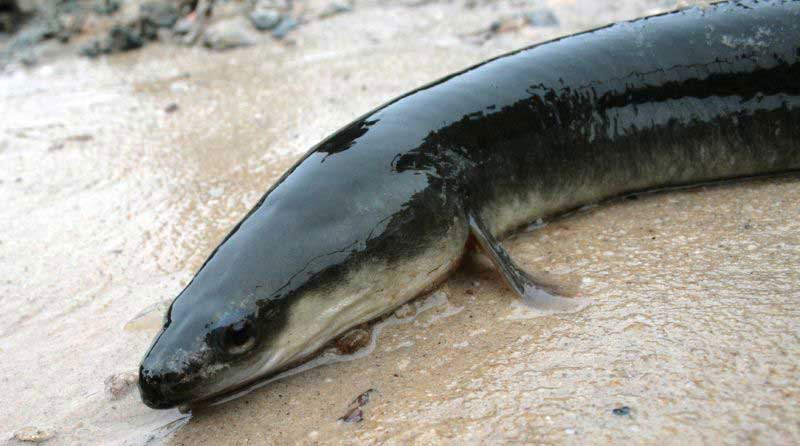 Following a petition from the Council for Endangered Species Act Reliability (CESAR) (click here to see petition), the U.S. government this month will once again consider calls to list the American eel as “threatened” under the Endangered Species Act (ESA). The American Eel Sustainability Association (AESA) reiterates its position that the American eel does not require either a “threatened” or “endangered” designation. AESA cites ample scientific study from a Federal agency and strict regulations already in place as support for this stance. Substantial scientific evidence demonstrates,,, Read the rest here 16:37
Following a petition from the Council for Endangered Species Act Reliability (CESAR) (click here to see petition), the U.S. government this month will once again consider calls to list the American eel as “threatened” under the Endangered Species Act (ESA). The American Eel Sustainability Association (AESA) reiterates its position that the American eel does not require either a “threatened” or “endangered” designation. AESA cites ample scientific study from a Federal agency and strict regulations already in place as support for this stance. Substantial scientific evidence demonstrates,,, Read the rest here 16:37
Scientific facts contradict group’s ‘very high risk’ label for American eel
 According to the environmental group the International Union for the Conservation of Nature, American eels are endangered and at a “very high risk” of extinction. That news was both shocking and perplexing to Maine’s hardworking fishermen, who have built a successful eel fishery by sustainably harvesting the species for many years. Their first-hand experiences and the overall success of Maine’s eel fishery are only a few of the many reasons to be skeptical of the environmental group’s designation. Read the rest here 08:17
According to the environmental group the International Union for the Conservation of Nature, American eels are endangered and at a “very high risk” of extinction. That news was both shocking and perplexing to Maine’s hardworking fishermen, who have built a successful eel fishery by sustainably harvesting the species for many years. Their first-hand experiences and the overall success of Maine’s eel fishery are only a few of the many reasons to be skeptical of the environmental group’s designation. Read the rest here 08:17
The American eel’s ‘endangered’ designation isn’t backed up by the science
 Over the past decade, eel fishermen in Maine and all along the Atlantic coast have been part of a responsibly managed fishery, adhering to stringent regulations developed across state, provincial and international lines.,, Despite these notable management efforts, in late 2014, the environmental group International Union for the Conservation of Nature placed American eel on its “Red List” of endangered species. Read the rest here 14:55
Over the past decade, eel fishermen in Maine and all along the Atlantic coast have been part of a responsibly managed fishery, adhering to stringent regulations developed across state, provincial and international lines.,, Despite these notable management efforts, in late 2014, the environmental group International Union for the Conservation of Nature placed American eel on its “Red List” of endangered species. Read the rest here 14:55
Eel Farms in Maine? Idea is Gaining Traction
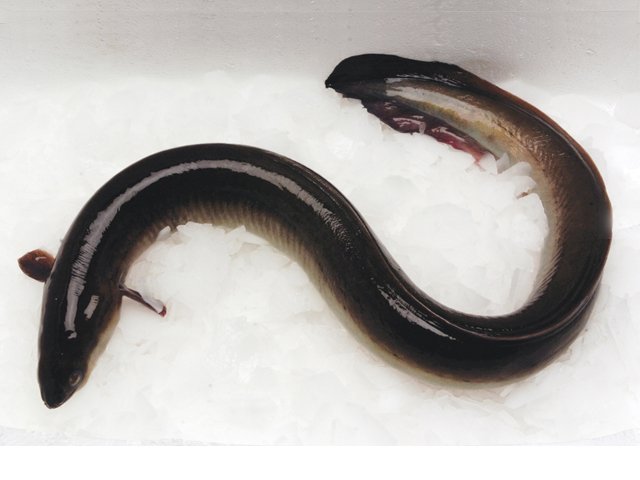 The baby eels they harvest are exported to Asia, where they’re grown to full size in fish farms and sold at a much higher price as sushi products. Barry Costa-Pierce says this is a missed economic opportunity for the Pine Tree State. “So Maine has got, what, over 600 permits out there for harvesting elvers,” he says, “and we’re shipping all of our elvers to China and Taiwan and we’re missing all of that value.” Audio, Read the rest here 09:40:
The baby eels they harvest are exported to Asia, where they’re grown to full size in fish farms and sold at a much higher price as sushi products. Barry Costa-Pierce says this is a missed economic opportunity for the Pine Tree State. “So Maine has got, what, over 600 permits out there for harvesting elvers,” he says, “and we’re shipping all of our elvers to China and Taiwan and we’re missing all of that value.” Audio, Read the rest here 09:40:
American Eel Is in Danger of Extinction
 The American eel has only recently become a sought-after fish, since the 2011 tsunami in Japan wiped out eel stocks and Europe banned eel exports a year later. “We saw a big shift from the European eel to the American eel to meet demand in Asia,” says postdoctoral researcher David Jacoby of the Zoological Society of London, who was involved in the American eel assessment. “This set off alarm bells during our assessment.” Red the rest here 11:18
The American eel has only recently become a sought-after fish, since the 2011 tsunami in Japan wiped out eel stocks and Europe banned eel exports a year later. “We saw a big shift from the European eel to the American eel to meet demand in Asia,” says postdoctoral researcher David Jacoby of the Zoological Society of London, who was involved in the American eel assessment. “This set off alarm bells during our assessment.” Red the rest here 11:18
Why is the status for American eel considered depleted in U.S waters? ASMFC
 Stock Status – From a biological perspective, much is still unknown about the species. Information is limited about their abundance, status at all life stages, and habitat requirements. According to the 2012 benchmark stock assessment, American eel population is depleted in U.S. waters. [email protected] 11:10
Stock Status – From a biological perspective, much is still unknown about the species. Information is limited about their abundance, status at all life stages, and habitat requirements. According to the 2012 benchmark stock assessment, American eel population is depleted in U.S. waters. [email protected] 11:10
American eel discovered in Ind.’s White River – It swam here from the Atlantic Ocean, biologist says
 When fisheries biologist Drew Holloway applied electric current to the White River during a fish population survey last week, he was as stunned as the fish. more@thestarpress 13:51:54
When fisheries biologist Drew Holloway applied electric current to the White River during a fish population survey last week, he was as stunned as the fish. more@thestarpress 13:51:54
The Virginia Institute of Marine Science is researching the American eel in order to better understand what affects its numbers and to better manage the fishery.
![]() Every spring when baby eels drift into the Chesapeake Bay from the Atlantic, then swim like mad up tributary rivers and creeks toward fresh water, Troy Tuckey is waiting for them. continued@dailypress
Every spring when baby eels drift into the Chesapeake Bay from the Atlantic, then swim like mad up tributary rivers and creeks toward fresh water, Troy Tuckey is waiting for them. continued@dailypress

































